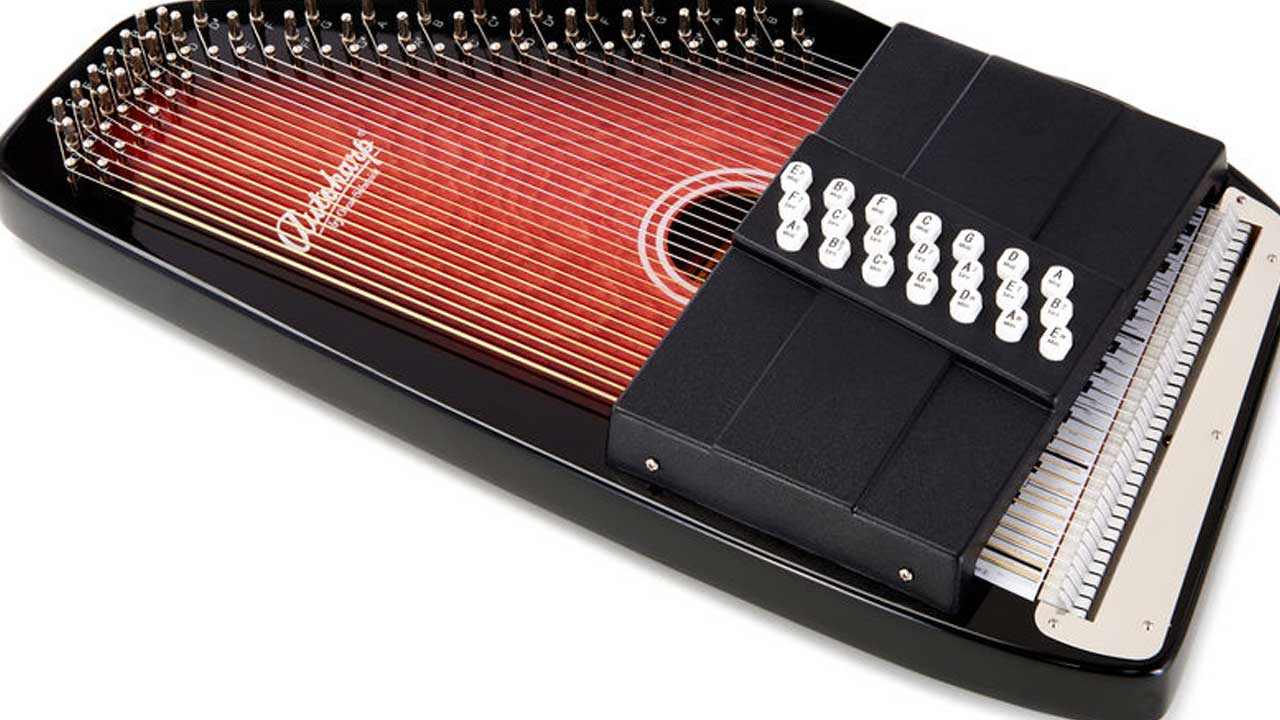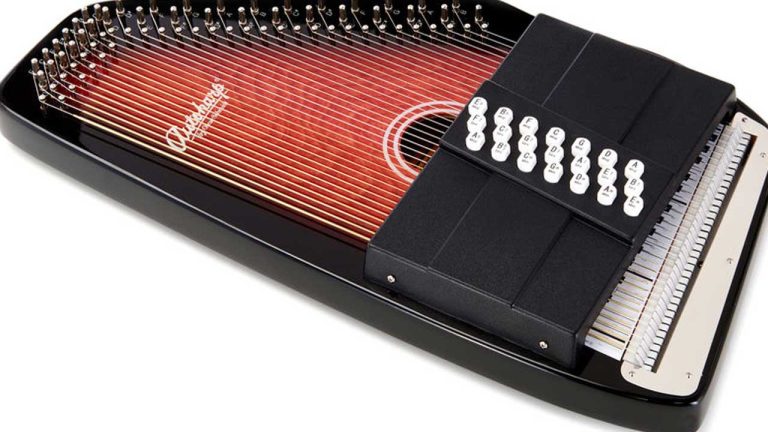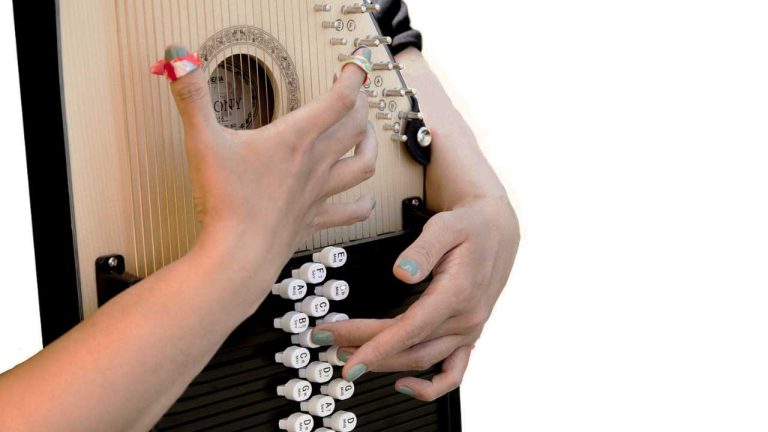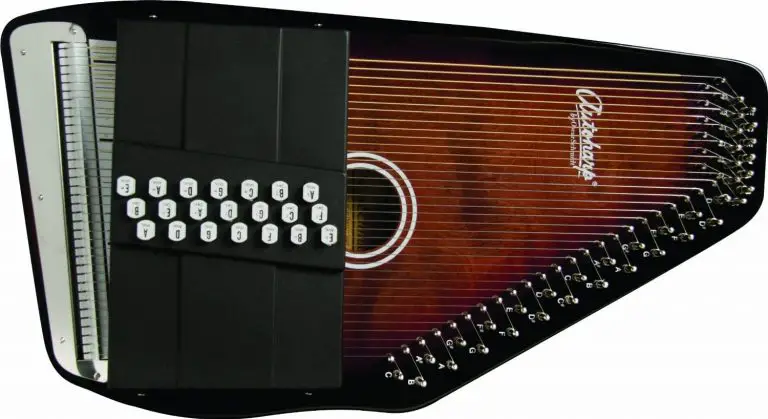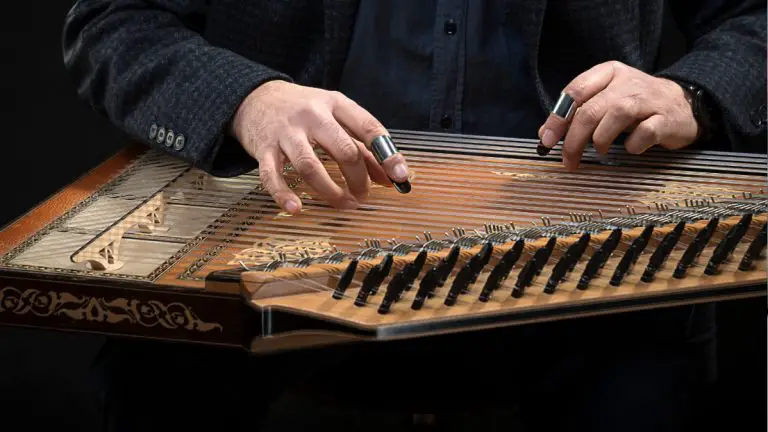What Is an Autoharp Worth? Your Guide to Pricing and Value
Folkstrings.com is reader-supported. When you buy through links on our site, we may earn a small commission.
An autoharp is a stringed instrument that’s loved for its ease of play and its role in folk and traditional music.
Unlike many other stringed instruments, the autoharp has a series of bars. When pressed, these bars mute all the strings except for those that form a desired chord. This feature makes it possible to produce harmonious music with minimal training. As a result, it’s popular in educational contexts and music therapy practices.
When it comes to purchasing an autoharp, prices can vary just as much as the instruments themselves.
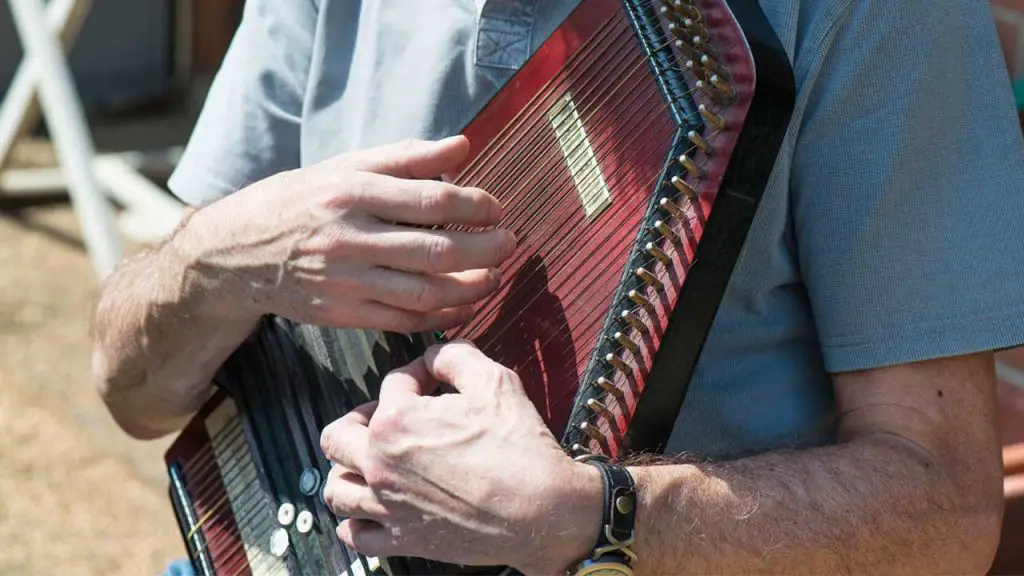
The value of an autoharp can be influenced by various factors including its brand, age, condition, and whether it comes with any accessories or customizations.
For new autoharps, prices typically start at around $100 and can rise to over $1,000 for high-end models. Used instruments often represent a cost-saving opportunity but require careful evaluation to ensure they’re in good condition and still produce a quality sound. The intended use, whether for professional performance, hobby playing, or therapeutic practice, can also shape the investment one is willing to make.
Key Points
- The autoharp is a versatile instrument, accessible to players of all skill levels.
- Cost can vary widely based on the autoharp’s brand, quality, and condition.
- My purchase decision should be informed by the intended use and personal budget.
Table of Contents
Understanding the Autoharp
The autoharp, a stringed musical instrument well-loved in folk music, has a rich history and comes in various physical forms with differences in materials and features that can affect its value.
Historical Background
The autoharp’s ancestry begins with the zither and is formally credited to Charles F. Zimmermann, who patented his design in the 1880s. However, it was entrepreneurs like Alfred Dolge and the Phonoharp Company that popularized the instrument. Oscar Schmidt, a notable manufacturer, eventually received the “Autoharp” trademark.
Typically associated with folk music, the autoharp has resonated through generations due to its ease of play and adaptability. This has incited a robust market for vintage models as well as modern variations.
Physical Structure and Variants
My examination of an autoharp reveals a fascinating structure: it’s essentially a wooden sound box with up to 36 strings stretched over it. A series of chord bars with dampers are pressed to mute all strings except those that form the desired chord. Here’s what I find notable about its structure:
- Materials: Traditional autoharps may be made from woods like maple, mahogany, or spruce — each imparting a distinct tonal quality to the music. You might find them with a glossy or a satin finish, contributing both to aesthetics and sound resonance.
- Models: The Oscar Schmidt OS45CE is an example of a modern autoharp, coming with a pickup for electric amplification. Known for its quality craftsmanship, Oscar Schmidt’s variety spans beginner models like the OS15B to more advanced options like the Chromaharp.
- Variations: Beyond the standard acoustic autoharp, some variations include electric autoharps, which permit amplification, and even custom models with unique tuner layouts or decorative inlays.
String Count and Tuning: Autoharps usually have 15 or 21 chord bars, each fitted with felt dampers to mute incorrect strings. The number of strings can vary, with many featuring 36 or 37 strings tuned chromatically. Each string passes over a metal bar before terminating at a tuning peg, allowing for precise tuning — a process familiar to those who have played other stringed instruments.
Autoharp Purchase Considerations
When I think about buying an autoharp, I focus on whether to get a new or used one and understanding the price ranges for different models. Selecting the right autoharp is crucial, whether I’m a beginner or a seasoned musician, and this decision impacts the value and longevity of the instrument.
New vs. Used Autoharps
New Autoharps:
- Pros: Comes with a warranty, no wear and tear, and up-to-date specifications.
- Cons: Higher cost, may require additional setup or adjustment.
- Notable Models: Oscar Schmidt OS21C, Oscar Schmidt OS73, and Chromaharps.
Used Autoharps:
- Pros: Lower cost, potential for high-quality instruments at a reduced price.
- Cons: Possible hidden damages, worn strings or chord bars, no warranty.
- Buying Tips: Check for a sturdy maple pin block and examine the type A and type B strings’ condition. Preferably purchase from reputable sources like folkstrings.com.
Price Ranges for Different Models
- Entry-Level Autoharps (21 Chords):
- Price Range: $300 – $500
- Common Models: Oscar Schmidt OS21C, various Chromaharps.
- Features: 21 chord buttons, suitable for beginners, might lack advanced features.
- Mid-Range Autoharps:
- Price Range: $500 – $700
- Common Models: Oscar Schmidt OS21CQTB.
- Features: Better wood quality, more refined sound, 21 chords.
- High-End Autoharps:
- Price Range: $1000 and above
- Common Models: Custom-made by luthiers, Oscar Schmidt OS73 models.
- Features: High-quality materials, customized chord setups, sometimes more than 21 chords for advanced playability.
- 15 vs. 21 Chord Autoharps:
- 15 Chord Autoharps: Typically less expensive, enough for basic play.
- 21 Chord Autoharps: Offer a wider range of chords, slightly higher in price.
Playing the Autoharp
Playing the autoharp is a delightful experience that combines simplicity with musical expressiveness. I find it particularly engaging because it allows me to produce chords and melodies with ease, making it a joy to play, whether I am a beginner or a seasoned musician.
Chords and Tuning
When I play the autoharp, I use chord bars to select the chords I want to play. Each bar is associated with a specific chord and by pressing down a bar, it mutes all strings that are not part of that chord, which allows for clean, resonant sound.
Here’s a brief guide on tuning the autoharp:
- First, I compare each string to a tuning reference, which can be a tuning fork, pitch pipe, or electronic tuner.
- For the fine-tuning system, I use a tuning hammer on the tuning pegs, to adjust the tension of each string until it matches the desired pitch. Autoharps typically have 36 or 37 strings, which correspond to various notes.
- For the best sound, I keep my autoharp in tune, as it profoundly affects the quality and enjoyment of my play.
Remember to handle the strings carefully – they’re similar to guitar strings and can be sensitive to how they’re plucked or strummed. Most of the time, I use a flatpick or fingerpicks for playing, similar to how I’d play a guitar, banjo, or dulcimer.
Maintenance Tips
The joy of playing the autoharp also comes with the responsibility of maintaining it:
- I need to keep my autoharp away from extreme temperature and moisture, as these can warp the soundboard and affect the tuning.
- Regularly replacing the felt on the chord bars ensures the chords don’t sound muted or buzz, which can affect my playing experience.
- As for the structure, solid construction with a black satin finish not only looks good but also offers protection and durability for my instrument, ensuring a better playing experience.
I’ve found that serious musicians often seek additional resources or autoharp accessories to enhance their instrument’s performance – like a fine tuning system or improved chord bars for a more responsive play. Having extra fingerpicks or a tuning hammer on hand never hurts either.
Frequently Asked Questions
When considering purchasing an autoharp, understanding its value is key. Below, I’ve addressed some common questions to help guide you through the buying process.
How can I determine the value of a used autoharp?
To assess a used autoharp’s value, I look at its condition, age, brand, and any unique features. It’s also wise to compare it against current market prices and check for any past repairs or modifications that could affect its value.
What price range can I expect when looking for an autoharp?
Autoharps can range in price from around $100 for basic, used models to over $1,000 for high-end, new instruments. The price largely depends on the brand, quality, and features.
How do the prices vary between different brands of autoharps?
Different brands of autoharps carry different reputations for quality and sound. Entry-level brands might be found for a few hundred dollars. Meanwhile, historically esteemed brands, like Oscar Schmidt, can command higher prices, especially for their vintage models.
Are there specific features that affect the price of an autoharp?
Yes, features such as the type of wood, the number of strings, its tuning system, and whether it has a pickup for amplification can all affect an autoharp’s price.
What are the price considerations when comparing new versus used autoharps?
New autoharps come with the latest features and a warranty, often justifying a higher price. However, used autoharps can provide great value if they’re in good condition. Though they may require additional maintenance or lack modern upgrades.
How much does the number of chords on an autoharp influence its cost?
The number of chords on an autoharp can influence its cost. More chords usually mean more complexity in the instrument’s mechanism and potentially a fuller sound.
Models with 21 or more chords will typically be pricier than those with 15 chords.
Author Profile
-
Daniel Johnstone is an English writer with a love for stringed instruments from around the world.
He shares his love for these instruments through his writing for folkstrings.com, a website dedicated to all things related to folk string music.
Daniel's passion for music started at a young age, and he has since become an accomplished musician, playing guitar, cavaco, and recently, the harp.
His dedication to learning and sharing his knowledge of stringed instruments is evident in his insightful and engaging blog posts. Whether you're a seasoned musician or a beginner, Daniel's writing is sure to inspire and entertain you.
When he's not playing music or writing, you can find Daniel exploring new instruments and seeking out new sounds to share with his readers.
Latest entries
 AutoharpApril 4, 2024What Is the Autoharp Made Of: Exploring Its Materials and Craftsmanship
AutoharpApril 4, 2024What Is the Autoharp Made Of: Exploring Its Materials and Craftsmanship AutoharpApril 4, 2024Is Autoharp Easy to Play? Unveiling the Truth for Beginners
AutoharpApril 4, 2024Is Autoharp Easy to Play? Unveiling the Truth for Beginners AutoharpApril 4, 2024What Is an Autoharp Worth? Your Guide to Pricing and Value
AutoharpApril 4, 2024What Is an Autoharp Worth? Your Guide to Pricing and Value AutoharpApril 4, 2024Are Autoharp and Zither the Same Thing? Unraveling String Instrument Myths
AutoharpApril 4, 2024Are Autoharp and Zither the Same Thing? Unraveling String Instrument Myths
Affiliates:
This post may contain affiliate links that at no additional cost to you, the site may earn a small commission. We only recommend products we would use ourselves and all opinions expressed on this site are our own.
Accuracy Advice:
While we strive to provide up-to-date and accurate information, the content in this article may not reflect the most current research or medical guidelines. We encourage readers to do further research and consult with professionals for more personalized advice.
Our Recommendations:
The products and services mentioned in any of our articles are recommended based on our independent research and personal experience. We are not sponsored by any company. We aim to suggest products and services we believe are of high quality and could be beneficial to our readers.

